Key Takeaways
- Data collection involves gathering and analyzing valuable information from various sources for marketing, customer insights, and financial planning.
- Primary data-collection methods include quantitative (questionnaires, surveys) and qualitative (interviews, focus groups) approaches.
- Top six data collection methods: Interviews, Questionnaires and surveys, Observations, Documents and records, Focus groups, Oral histories.
- Secondary data collection involves utilizing data collected by governmental entities and agencies, such as census data.
- Sampling methods in data collection include random, systematic, convenience, clustered, and stratified sampling.
As our society moves away from factory jobs, lifelong education is becoming an increasing necessity. Technology and data have become a part of how we work. That change has placed more demands on educators than ever before. Whether you’re teaching in a classroom or a boardroom, you need to learn how to collect and manage data.
Although data can be valuable, too much information is unwieldy, and the wrong data is useless. The right data collection method can mean the difference between useful insights and time-wasting misdirection.
What is data collection?
Data collection happens when you gather and analyze valuable information (e.g., names, email addresses, customer feedback, and website analytics) from a variety of sources to build compelling marketing campaigns, learn more about your customers, or create financial budgets.
Effective data collection can help you solve a problem, of course, but it can also measure brand awareness, identify trends, and spark new ideas.
Did You Know
With Jotform, you can successfully utilize several of these methods, especially by using ready to use questionnaires and survey templates!
Primary data-collection methods
When the party conducting the research (whether that’s a person or an organization) collects data, it’s considered primary data, as opposed to secondary data, which an external source collects and references.
Some of the primary data-collection methods covered below are quantitative, dealing with countable data. Others are qualitative, meaning that they consider factors other than numerical values. Generally, questionnaires, surveys, documents, and records are quantitative, while interviews, focus groups, observations, and oral histories are qualitative. There can also be crossover between the two methods.
Before we delve into more specifics about qualitative and quantitative data-collection methods, let’s take a quick look at the top six data-collection methods.
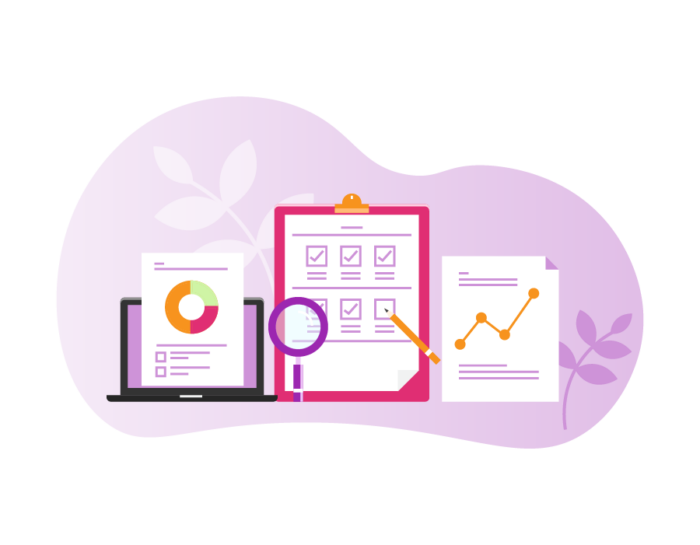
Here are the top six data collection methods:
- Interviews
- Questionnaires and surveys
- Observations
- Documents and records
- Focus groups
- Oral histories
One platform to power all your data
Enable data-driven decisions without compromising security. With no-code solutions and administrative controls from Jotform Enterprise, teams can break free from legacy systems to automate, collaborate, and scale.
Top 6 data collection tools
There are several tools available for primary data collection. The methods range from traditional and simple — such as a face-to-face interview — to more sophisticated ways to collect and analyze data.
Here are the top six data collection methods:
Interviews
Observation
Documents and records
Focus groups
Oral histories
Questionnaires and surveys
If you asked someone completely unaware of data analysis how to best collect information from people, the most common answer would likely be interviews.
Almost anyone can come up with a list of questions, but the key to efficient interviews is knowing what to ask. Efficiency in interviewing is crucial because, of all the primary data collection methods, in-person interviewing can be the most expensive.

There are ways to limit the cost of interviews, such as conducting them over the phone or through a web chat interface. But sometimes an in-person interview can be worth the cost, as the interviewer can tailor follow-up questions based on responses in a real-time exchange.
Interviews also allow for open-ended questions. Compared to other primary data collection methods, such as surveys, interviews are more customizable and responsive.
Observation involves collecting information without asking questions. This method is more subjective, as it requires the researcher, or observer, to add their judgment to the data. But in some circumstances, the risk of bias is minimal.
For example, if a study involves the number of people in a restaurant at a given time, unless the observer counts incorrectly, the data should be reasonably reliable. Variables that require the observer to make distinctions, such as how many millennials visit a restaurant in a given period, can introduce potential problems.
In general, observation can determine the dynamics of a situation, which generally cannot be measured through other data collection techniques. Observation also can be combined with additional information, such as video.
Sometimes you can collect a considerable amount of data without asking anyone anything. Document- and records-based research uses existing data for a study. Attendance records, meeting minutes, and financial records are just a few examples of this type of research.
Using documents and records can be efficient and inexpensive because you’re predominantly using research that has already been completed. However, since the researcher has less control over the results, documents and records can be an incomplete data source.
A combination of interviewing, surveying, and observing, a focus group is a data collection method that involves several individuals who have something in common. The purpose of a focus group is to add a collective element to individual data collection.
A focus group study can ask participants to watch a presentation, for example, then discuss the content before answering survey or interview-style questions.
Focus groups often use open-ended questions such as, “How did you feel about the presentation?” or “What did you like best about the product?” The focus group moderator can ask the group to think back to the shared experience, rather than forward to the future.
Open-ended questions ground the research in a particular state of mind, eliminating external interference.
At first glance, an oral history might sound like an interview. Both data collection methods involve asking questions. But an oral history is more precisely defined as the recording, preservation, and interpretation of historical information based on the opinions and personal experiences of people who were involved in the events.
Unlike interviews and surveys, oral histories are linked to a single phenomenon. For example, a researcher may be interested in studying the effect of a flood on a community. An oral history can shed light on exactly what transpired. It’s a holistic approach to evaluation that uses a variety of techniques.
As in interviewing, the researcher can become a confounding variable. A confounding variable is an extra, unintended variable that can skew your results by introducing bias and suggesting a correlation where there isn’t one.
Consider, as an example, the correlation between sunburn and ice cream consumption. If both figures rise together, an unscientific conclusion may be that ice cream is the source of sunburns.
However, there’s a possibility that an additional variable — temperature — affects both of these occurrences. Hot weather is a confounding variable to both ice cream consumption and sunburn. The hotter the weather, the more likely people will eat ice cream and spend time outside, resulting in higher rates of sunburn.
Questionnaires and surveys can be used to ask questions that have closed-ended answers.
Data gathered from questionnaires and surveys can be analyzed in many different ways. You can assign numerical values to the data to speed up the analysis. This can be useful if you’re collecting a large amount of data from a large population.
To be meaningful, surveys and questionnaires need to be carefully planned. Unlike an interview, where a researcher can react to the direction of a respondent’s answers, a poorly designed questionnaire will lead the study nowhere quickly. While surveys are often less expensive than interviews, they won’t be valuable if they aren’t handled correctly.
Surveys can be conducted as interviews, but in most cases, it makes sense to conduct surveys using forms.
Online forms are a modern and effective way to conduct surveys. Unlike written surveys, which are static, the questions presented in online forms can change according to how someone responds thanks to the conditional logic form feature. For instance, if you use Jotform to create your forms, when someone answers no to a question about allergies, they won’t have to scroll past all of the related follow-up questions about specific allergies. Instead, they’ll go immediately to a question on a different topic.
Pro Tip
You can use Jotform’s collection of form templates instead of creating a form from scratch. All you need to do is choose a template from over 10,000 ones and customize it for your needs.
Modern form building also emphasizes mobile data collection, so the forms can easily be viewed and filled out on mobile devices.
One concern when gathering data electronically in the EU is the European Union’s General Data Protection Regulation (GDPR). This newly enacted regulation provides privacy protection to EU residents and citizens and can result in costly fines for noncompliance. If you want to learn more about how to make sure your forms are GDPR compliant, Jotform has all the information you need.
Qualitative data collection methods
Data analysis can take various forms. The method you choose depends on the subject matter of your research.
Quantitative methods, such as surveys, large-scale benchmarks, and prioritization, answer the question “How much?” But these methods can leave the question “Why?” unanswered. This is where qualitative data collection methods come into play.

Understanding qualitative data collection
Qualitative data collection looks at several factors to provide a depth of understanding to raw data. While qualitative methods involve the collection, analysis, and management of data, instead of counting responses or recording numeric data, this method aims to assess factors like the thoughts and feelings of research participants. Qualitative data collection methods go beyond recording events to create context.
With this enhanced view, researchers can
- Describe the environment. Understanding where observations take place can add meaning to recorded numbers.
- Identify the people involved in the study. If research is limited to a particular group of people, whether intentionally or as a function of demographics or other factors, this information can inform the results.
- Describe the content of the study. Sometimes, the specific activities involved in research and how messages about the study were delivered and received may illuminate facts about the study.
- Interact with study participants. Interactions between respondents and research staff can provide valuable information about the results.
- Be aware of external factors. Unanticipated events can affect research outcomes. Qualitative data collection methods allow researchers to identify these events and weave them into their results narrative, which is nearly impossible to do with just a quantitative approach.
Just so you know
Start gathering qualitative data with Jotform’s free forms and surveys for effortless online data collection.
Qualitative research methods
There are three commonly used qualitative data collection methods: ethnographic, theory grounded, and phenomenological.
Ethnography comes from anthropology, the study of human societies and cultures. Ethnography seeks to understand how people live their lives. Through this method, researchers veer away from the specific and practical questions that traditional market researchers use and instead observe the participants in a nondirected way. This approach is intended to reveal behaviors from a subject’s perspective rather than from the view of the researchers.
Ethnography helps fill in the blanks when a participant may not be able to articulate their desires or the reasons for their decisions or behaviors. Instead of, or in addition to, asking why a participant acts a certain way, researchers use observation to understand the why behind these desires, decisions, or behaviors.
Grounded theory arose when sociological researchers sought to provide a level of legitimacy to qualitative research — to ground it in reality rather than assumptions. Before this method, qualitative data analysis was actually done before any quantitative data was collected, so it was disconnected from the collection and analysis process.
Grounded theory uses the following methods:
- Participant observation. Researchers immerse themselves in the daily lives of subjects. Another term for this is “fieldwork.”
- Interviews. These can vary in formality from informal chats to structured interviews.
- Document and artifact collection. Grounded theory often is about more than observation and interviews. Researchers can learn about a group of people from looking at materials the group used. For example, a local community’s laws may shed light on opinions and provide a clearer picture of residents’ sentiments.
Sometimes, a person’s true colors emerge only when they are genuinely put to the test. As such, phenomenology describes how people experience certain events or unique encounters. This method measures reactions to occurrences that are outside of the norm, so it’s essential to understand the whole picture, not just facts and figures.
An example of phenomenology is studying the experiences of individuals involved in a natural disaster. To analyze data from such an event, the researcher must become familiar with the data; focus the analysis on the subject matter, time period, or other factors; and categorize the data.
Completing these tasks gives the researcher a framework for understanding how the natural disaster impacts people. Together, the understanding, focus, and organization help researchers identify patterns, make connections, interpret data, and explain findings.
Each of these qualitative data collection methods sheds light on factors that can be hidden in simple data analysis. Qualitative data is one way to add context and reality to raw numbers. Often, researchers find value in a hybrid approach, where qualitative data collection methods are used alongside quantitative ones.
Quantitative data collection methods
Marketers, scientists, academics, and others may start a study with a predetermined hypothesis, but their research often begins with the collection of data.
Initially, the collected data is unstructured. Various facts and figures may or may not have context. A researcher’s job is to make sense of this data, and the choice of data collection method often helps.
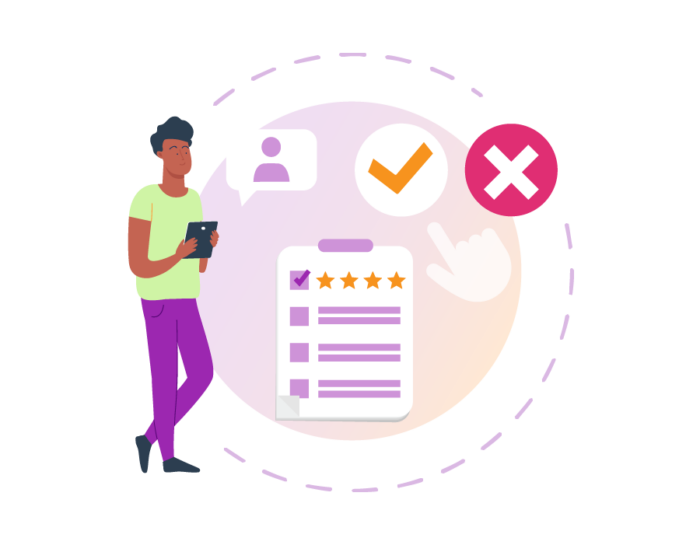
Using data to determine values
One of the most widely used methods of collecting information for research purposes is quantitative data collection. Quantitative analysis relates to evaluating a numerical result. A classic example is a survey, which asks questions to collect responses that shed light on trends, preferences, actions, opinions, and any other element that can be counted.
Quantitative data collection methods are popular because they are relatively straightforward. Using these methods, researchers ask questions to collect sets of facts and figures. Quantitative data is measurable and expressed in numerical form.
While this seems like a fairly simple concept, like many aspects of research, there are various approaches to quantitative data collection that depend on the particular research being conducted.
Pro Tip
Collect quantitative data for your research with Jotform’s free, customizable form and survey templates.
Different quantitative research approaches
Researchers use four different primary quantitative research designs: descriptive, correlational, experimental, and quasi-experimental.
Descriptive research explains the current status of a variable using observational data collection. Often, the researcher begins without a hypothesis and lets the data steer the direction of the study.
A simple example of quantitative descriptive research is a study that collects and tabulates test scores. Descriptive research frequently uses charts and tables to illustrate results.
While a descriptive approach is often quantitative, it can be qualitative. Descriptive data collection asks questions such as “What is X?”
Correlational research seeks to collect data that shows relationships between different occurrences. A positive correlation is one in which two variables either increase or decrease at the same time. A negative correlation is when an increase in one variable means a decrease in another.
There is also a zero correlation result, in which the relationship between two variables is insignificant. Correlation helps make predictions based on historical relationships and determine the validity and reliability of a study.
An example of correlational data would be how a person’s height often correlates to their weight — the taller one gets, usually the heavier they are. This is a positive correlation.
Experimental research, also known as “true experimentation,” uses the scientific method to determine the cause-and-effect relationship between variables. This method uses controls for all of the crucial factors that could potentially affect the phenomena of interest. Using the experimental method, researchers randomly assign participants in an experiment to either the control or treatment groups.
Quasi-experimental research, also known as “causal-comparative,” is similar to experimental research. Since it’s often impossible or impractical to control for all factors involved, quasi-experimental methods don’t control for some factors but otherwise follow the scientific method to establish a cause-and-effect relationship.
In both of these types of studies, independent variables are manipulated. But experimental data collection methods use random assignment and sampling, whereas quasi-experimental methods don’t randomize assignment or sampling or both.
Experimental methods are known for producing results that are both internally and externally valid, meaning that the study is conducted, or structured, well (internal validity) and the findings are applicable to the real world (external validity). Quasi-experimental methods, on the other hand, produce results of questionable internal validity.
Application of quantitative methods in practice
There are a number of ways researchers can put different types of quantitative data collection into action without using experiments.
Quantitative surveys enable researchers to ask closed-ended questions with a provided list of possible answers. This method is easier for respondents, as they just pick from a list of responses. It’s an ideal solution for larger-scale studies that could become unwieldy with the type of open-ended questions often associated with qualitative surveys.
Because the questions and answers are standardized, researchers can use the results to make generalizations. Closed-ended questions, however, can be limiting. A respondent may not see their answer in the given choices.
Quantitative interviews are typically conducted face to face, over the phone, or via the internet. They enable researchers to not only collect information but also tailor the questions to the audience on the spot. This can help add some “why” to the “how much” collected through quantifiable means.
What are secondary data collection methods?
Since most research involves the collection of data, there are several methods for direct, or primary, data collection, including surveys, questionnaires, direct observations, and focus groups.
While primary data collection is considered the most authoritative and authentic data collection method, there are several instances where secondary data collection methods can provide value.
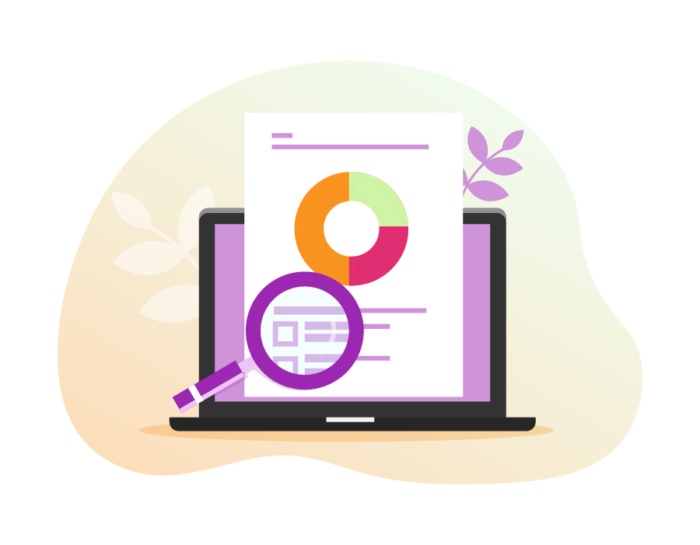
Understanding secondary data collection
What is secondary data collection, and why would a researcher employ it in addition to primary data? Think of secondary data as second-hand data. It’s someone else’s research, another person’s original bank of knowledge.
Second-hand data can add insight to a research project, and using secondary data is more efficient and less expensive than collecting primary data. So how can someone else’s research be valuable to your independent study? Answering this question involves understanding how a lot of research is initiated today.
The role of the government in statistical research
For a variety of reasons, lots of governmental entities and agencies collect demographic and other information on people. Governments collect data through various means, sometimes as part of other activities. The census is a great example of valuable governmental primary data collection that can be used as a secondary data collection method in other research studies.
Several nonprofit and governmental entities specialize in collecting data to feed the efforts of other researchers.
Research from public sources is usually free.
Public sources beyond the U.S. Census Bureau include
- State and Metropolitan Area Data Book
- Statistical Abstract of the United States
- U.S. Industry and Trade Outlook
- U.S. Government Printing Office
- Small Business Administration
- Local chambers of commerce
- County governments
Just so you know
Collect primary and secondary data online with Jotform’s free online forms and surveys designed to streamline your research process.
Other sources of secondary data
While governments are sources of useful information, they aren’t the only suppliers of secondary data. Commercial sources include research and trade associations, such as banks, publicly traded corporations, and others.
Educational institutions are also reliable sources of secondary data. Many colleges and universities have dedicated research arms that leverage data for educational purposes. This data can often assist others in unrelated studies.
The value of secondary data
There is more to secondary data than the fact that it is cheaper than primary data; however, cost is a major reason why this data is used. If the information you need is already available, it simply makes sense to use it rather than to replicate it.
Sometimes primary data is unnecessary for a particular research goal. You should first determine whether or not your research questions have already been asked and answered. If so, you can devote your data collection budget to expand on what has already been determined through other unrelated projects.
The cost of collecting primary data can be considerable. While using secondary data is cheaper, it also saves time. Time has a value of its own in research, allowing for greater emphasis on studying results.
Ultimately, using secondary data saves time and money, which facilitates a more in-depth study of the subject. Combined with primary research, secondary data can help researchers better understand their subjects and more efficiently prepare and organize results.
Sampling methods in data collection
Imagine that your business serves a substantial population. Maybe you have a massive customer list (which most businesses would love), or you’re trying to gain some insights on a large group, such as the residents of a large city. In most cases, it’s impractical to try to reach each member of this population.
Sampling is the process of identifying a subset of a population that provides an accurate reflection on the whole. It can be a tricky process, as populations are often diverse. However, there are some statistical methods that can make sure a small subset of the community accurately represents the whole group.

There are five generally accepted sampling methods. Below is an overview of these methods, the pros and cons of each, and how they can be put to work in your research.
Just so you know
Obtain data from any sample size with Jotform’s online forms and surveys that are easy to share and assign.
Random sampling
Just as its name indicates, random sampling involves picking respondents with no design or order, like picking names out of a hat. While randomness may seem unscientific, this method can be valuable in research, and in fact, is the preferred way of sampling, as a truly random sample eliminates elements that can affect the validity of a study.
Randomness requires some planning. For example, randomly picking pedestrians in Manhattan’s Times Square on a Saturday afternoon will give the researcher a reasonably diverse cross-section of tourists. This would not, however, be an excellent way to test native New Yorkers who often shun the area, especially on weekends.
Computer-generated lists can aid in achieving randomness.
Systematic sampling
Easier than random sampling, systematic sampling follows a set of rules to create regularity in sampling. An example is interviewing every tenth customer. As long as you follow the counting system, you’ll know that there’s some order to the process.
Systematic sampling retains some of the benefits of randomness, but it can be too rigid in cases where, for example, the researcher knows that the counting system is going to result in data that skews one way or another. An example would be someone interviewing every 10th customer and every 10th person being a female in the same age range.
Convenience sampling
This is the easiest sampling method but also the least reliable. Convenience sampling involves gathering information from whoever is closest and easiest to reach. An example would be asking coworkers in the same office a question, rather than questioning every employee at the company, since going to other offices might take more time and effort. Convenience sampling can also involve using whatever data is readily available.
Sometimes, convenience sampling can be effective, such as to gain initial primary data on brand impressions or product redesigns, where participant diversity or inclusion criteria may be less important.
Clustered sampling
With clustered sampling, a researcher uses the subgroups of a population instead of individuals. Clusters are often predefined, such as municipalities in a study about the effect of a particular phenomenon across the country.
Clustered sampling is further broken down into different types — single-stage cluster sampling, where all individuals in a cluster are included in the sample, or two-stage cluster sampling, where only random individuals within the cluster are chosen.
The main benefit of clustered sampling is that some of the work is already done: A group is already clearly defined. Therefore, it can be more efficient than other methods. However, there can be bias in the study if the clusters do not accurately represent the population as a whole.
Stratified sampling
Another method that uses subgroups is stratified sampling. This data collection method involves dividing a population into subgroups that share similar characteristics.
For example, a study can break respondents down by gender or age. When the components are easy to determine, like gender or age, the risk of bias is low, especially if the data comes from the respondents. Stratified sampling reduces bias, but sometimes characteristics are difficult to ascertain, which can either frustrate the sampling process or invite bias.
Stratified and cluster sampling may sound similar. Here’s the critical difference: In stratified sampling, individuals are randomly selected from each group (or strata). In cluster sampling, only certain clusters are used.
Data collection and lead generation
There are many methods businesses can use to collect and analyze customer information.
The key to gaining more customers through market research is to turn data collection into lead generation. The ideal result is not only generating more leads but recognizing the opportunities that are likely to turn into increased sales.
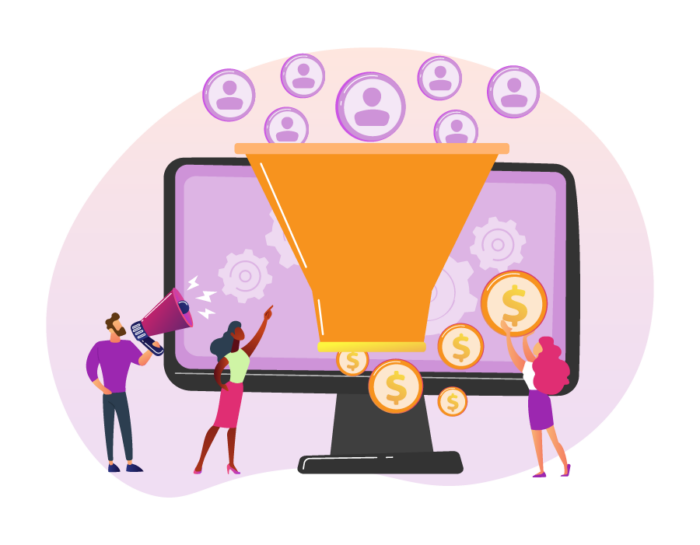
Understanding lead generation
Leads are the fuel of a company’s sales engine. In the case of business-to-business activity, a sales lead is a person or entity that has the potential to convert to a customer or client. For businesses that have a large footprint and enjoy wide brand recognition, leads can be broadly defined as most members of a community. This is the case with B2C companies such as Walmart and McDonald’s, which often spend much less time and effort reaching their audience as a result.
Leads are identified through a variety of methods, data collection included. With more and more individuals and businesses using the internet to shop for virtually every possible product and service, online sources of lead generation are quite popular and effective. Almost 90 percent of all Americans use the internet, and the small percentage of those who don’t use it in their daily lives are typically older adults.
Power your lead generation process with JotForm. Get more contacts and leads with our free, ready-to-use lead-gen templates.
Leveraging online interactions to power lead generation
How do businesses successfully tap into the large percentage of people online? One of the most effective ways to turn engagement with the public into valuable leads is by using forms. Forms allow businesses to collect critical data from potential customers, such as name, email address, industry, job title, and more.
While it’s easy to understand how a form can collect this sort of information, the key step is engaging potential customers and getting them to provide the information you need. One particularly effective method is to give potential customers something of value in exchange for their information.
Such an incentive can be a discount code for becoming a member, a free downloadable checklist, an e-book, or a white paper. This gives your potential customers a positive interaction and association with your brand and provides you with the tools needed to target them at a later date.
Gated content to capture potential
Using a content gate can help you collect the information you want. A content gate requires your potential customers to provide you with valuable contact information in order to access the material, discount codes, or other things of value you’re offering. You can also track the content for later use. Without a content gate, someone can view the content, then move on without ever being reminded about the benefits of your products or solutions.
Controlling the lead-generation process
Using forms for downloadable content is an effective method for gathering high-quality leads, However, there is a risk of getting inaccurate information.

For example, a potential customer in the early stages of shopping for products and services may be less likely to use their email address because of spam fears. This can lead to people creating separate email accounts for signing up for these sorts of downloads or entering false email addresses to bypass a system.
There are several ways to combat the potential disruption of your lead-generation campaign. First, systems that use technology, such as CAPTCHA, verify that an email account is valid and ensure that your site isn’t getting bombarded by bots.
Another method is Internet Protocol (IP) limiting, which restricts the number of downloads available to users from the same IP address. Businesses can set a threshold number of downloads, and the system will disable access after that number has been reached or after a certain time frame.
More lead-generation tools
In addition to using gated forms to collect lead data, businesses can use social media and Search Engine Optimization (SEO). Social media helps you to establish your brand as an authority and to connect with and engage current and prospective customers. Optimizing your website can help put your brand in front of more internet searchers.
Whether you employ forms, social media, SEO, or a combination of methods, it all starts with a lead-generation strategy that’s tailored to your business and your potential customers.
Data collection through online forms
Collecting data with the Likert scale
Even those unfamiliar with data collection and research have probably had a brush with the Likert scale. It’s a series of questions or items that call for respondents to provide an answer on a scale — for example, a range of one through six, with one meaning strongly disagree and six meaning strongly agree with a given statement.
If you’re conducting surveys, you need to know how to analyze Likert scale data.
The Likert scale measures attitudes, which can be a helpful indicator for businesses looking to gauge customer opinions on products, services, and more. These scales usually contain five to seven points and follow a linear pattern.
Jotform makes incorporating Likert scales into surveys and questionnaires easy.
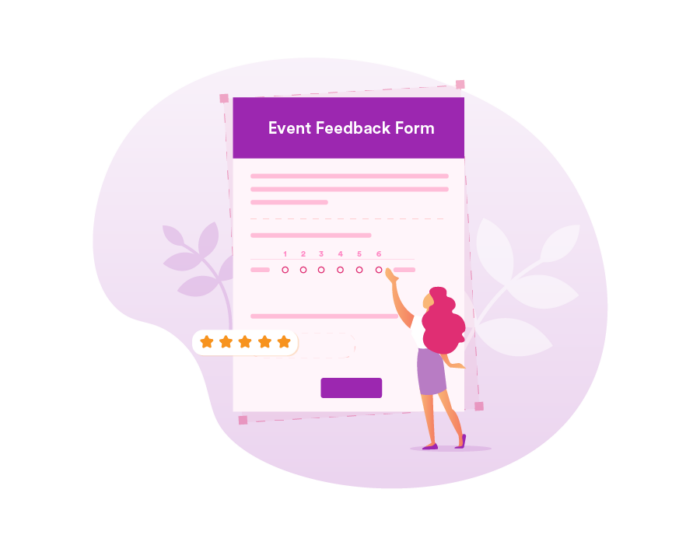
What is informed consent?
Obtaining consent is an important component of online data collection. Jotform’s consent form templates allow users to create custom consent forms for a variety of situations. These include photo releases, parental consent, authorization to release, and other forms.
Healthcare providers in particular need to obtain informed consent before collecting data. In order for informed consent to be valid, four elements generally need to be present:
- The person giving consent must be competent to make the decision. Competency is a legal term that a court decides. A person’s capacity to make a decision isn’t black and white. Some decisions may be within a person’s ability to make, while others may fall outside of their ability due to certain barriers.
- Disclosure by the medical provider of expected benefits and risks. This is the informed part of the informed consent concept, and it places the burden on the provider to fully inform someone before asking for their consent. How much information do you have to disclose? The answer is adequate information to make an informed decision. This likely means disclosing all of the potential risks and benefits of a procedure, medication, etc., and the likelihood of side effects or other adverse reactions.
- The person providing consent must understand the information. This element is similar to capacity but can involve breaking down language barriers or other factors that might impede understanding beyond competency.
- Consent must be given voluntarily. This means that the permission is given of one’s free will, by choice, and not through force or compulsion. Factors that affect whether consent is voluntary can include subtle elements such as socioeconomic status or obvious ones such as threats or coercion.
Each of these elements can be part of an online consent form. Detailed disclosures and questions can identify whether a component is lacking.
Why is informed consent important?
Without informed consent, your data will be invalid. Results from unknowing participants have less value and are often unusable. With Jotform, you can ensure that you properly document consent, making your job as a researcher, business owner, or healthcare provider easier.
Survey feedback forms
Another area of interest for researchers is feedback on a survey or research method. Follow-up questions through a feedback form can shed light on a study. For example, if respondents don’t understand the questions in a survey, their feedback can help a researcher understand the reason for poor results or identify potentially inaccurate findings. Feedback can also help fuel process improvements in a business.
With Jotform, companies can easily solicit feedback from clients. While individual business activities may guide specific feedback questions, some of the best feedback is simple and client-driven, and offers the client an opportunity to provide a narrative.
Feedback can also incorporate some of the other elements of data collection, such as a Likert scale, to gauge satisfaction.
With these tools and forms, businesses can turn qualitative data into quantitative data and draw meaningful conclusions from it. For example, feedback provides qualitative data, such as how a participant felt after a study’s conclusion. This emotional data can be scored and assigned a value, which then can be used to gauge the effectiveness of a particular component of a study.
Accessing the data
One of the main benefits of using Jotform is the ability to easily tap into data analytics. Jotform’s report section presents the collected data in a clear format, eliminating extra steps and making data analysis more efficient and cost-effective.
From collecting data to using various methods to simply and efficiently gauge attitudes and manage consent and feedback, Jotform provides tools that enable better research.
Jotform as a data collection tool
Data can provide insight into customers, processes, and employees; it can often give companies the leverage they need to gain a significant competitive advantage.
While information can drive innovation, businesses need to find efficient methods of collecting and organizing data. Just as many technological tools, data is only beneficial when it’s used wisely; data doesn’t deliver miracles to businesses but instead provides an opportunity for improvement.
Get the right data at the right time
Jotform helps organizations collect the data they need by automating complex tasks, including collecting customer info and other data, as well as collecting payments, such as subscription fees and donations.
Jotform’s online Form Builder makes creating professional-looking forms easy with options to customize the layout and branding of forms.
Jotform can save you time and effort. Form templates, themes, widgets, and integrations give your forms more power and drive better results.
Jotform gives forms life across a variety of industries
There are many ways to use Jotform, but a few key examples illustrate the benefits of using online forms to collect data. These examples show how important it is to know which data to collect and some surprising ways different industries use data.
Data collection in the classroom
Educational institutions can use data collection methods to help propel learning. Long before computers and advanced analytics, teachers tallied quiz and test scores and analyzed the results not just for reporting purposes but also to identify trends in a particular class and help guide the learning process.
These goals remain, but with new tools, teachers and administrators can go deeper. Data from different sources, such as attendance records and homework scores, for example, provides opportunities for richer insights and the ability to identify correlations that might not be visible at first glance.
This data has already provided direction to educational institutions. EdTech tools such as learning software and digital games generate extensive data that can gauge student learning.
Educational data collection also shows the importance of not merely collecting information but tailoring it to the needs of students. And of course, input from teachers is essential for effective data collection.
Summer camps benefit from form automation
Summer camps are both similar to and different from educational institutions. Some of their data collection needs are educational, while others aren’t.
Camps have a few challenges, such as getting to know campers quickly to make sure they start benefiting from the experience right away. A form creator can help make information collection easier and quicker.
Sports camps, for example, may want to know specific, measurable data such as recent statistics about or skill levels of the campers. Tailored forms help collect the information you need.
Camps also need payment forms, contact information forms, consent forms, and health forms. Forms help summer camps get all the pertinent information needed for a successful camp. Automation and tracking help ensure nothing falls through the cracks.
Forms can help professional photographers present their portfolios and gather customer data
Like many business owners, professional photographers deal with a lot of paperwork. From appointment and session agreement forms to payment collection and photo release forms, Jotform allows photographers to focus on their clients, not on collecting information and getting forms signed.
Forms help art galleries collect data
Art galleries benefit from Jotform’s data collection features too. The art business has unique challenges. Sales tend to be larger-ticket items with less demand, which makes data-driven variables such as payments, event registration, and feedback crucial. Since customers are a discerning crowd, art galleries often spend more time developing relationships than making individual sales.
These relationships can be fleshed out with customer data on likes, dislikes, previous pieces purchased, and any other data that can help direct sales and marketing efforts more efficiently. If you already know that customer A is fond of photography, then you can be sure to target that customer with marketing materials about photography.
Jotform can also help manage another unique component of the business of art: managing submissions by artists. It’s critical to gather accurate information from artists, not only for customers but also to plan and develop seasonal exhibitions. Jotform provides a communication and tracking solution so that artists and galleries can collaborate effectively. Artists and galleries can log in and quickly see what information has been submitted, and export information to a shareable PDF with Jotform’s free PDF Editor.
Provide more responsive healthcare with Jotform
Most people are aware of the small mountain of paperwork required in healthcare today. Jotform helps speed up new patient onboarding and other form-heavy processes that can make patients feel neglected.
With easily fillable forms, you can direct patients to a simple portal where they can upload their information in advance. Not only is this a time-saver, but it can also help identify potential problems, such as preexisting conditions and possible drug interactions beforehand.
Did You Know
These are just a few of the many examples that demonstrate how Jotform can fuel efficiencies in organizations, resulting in better service and happier customers. Sign up now!

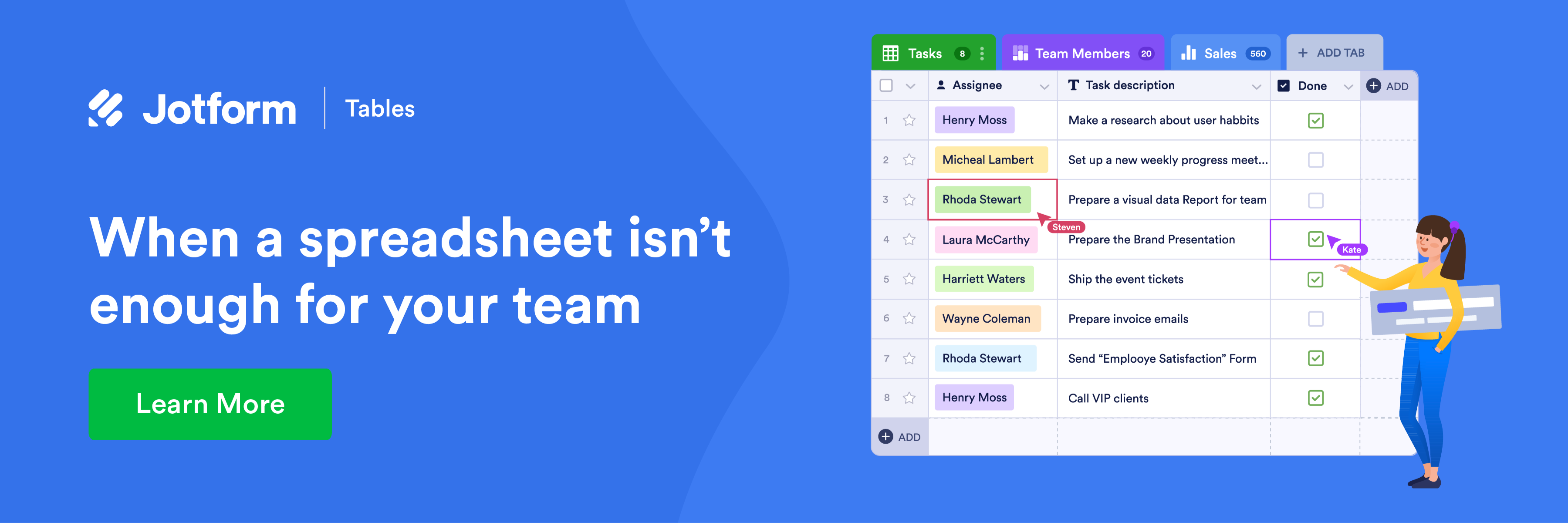
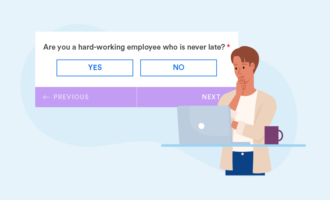








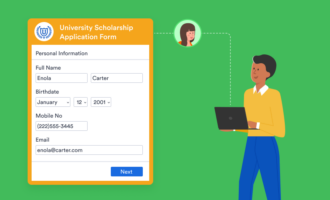














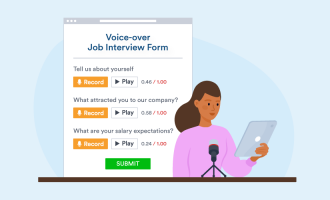




Send Comment:
31 Comments:
309 days ago
Excellent article that clearly focuses on and gives in-depth knowledge of Data collection.
More than a year ago
The field of education is changing so much and I wonder how classical universities and colleges will integrate into it in the future. Now online education platforms are becoming more and more popular. According to analytical essays on changing educational processes iews/ , soon more and more students will prefer to receive education remotely.
More than a year ago
thank for the great job
More than a year ago
Our business is concerned with jotforms access to our data during the transmission between form input to the database. What guarantee do we have that all of our data is not also collected by jotform?
More than a year ago
Thanks for this useful document, very organized
More than a year ago
Very very useful
More than a year ago
found it so helpful. Thanks!
More than a year ago
You have written a succinct and useful article. I want to educate myself more on this and its related topics. So, could you please provide the references to the books or the research articles that you must have consulted?
More than a year ago
The information is very insightful
More than a year ago
This blog has very useful information
More than a year ago
This writing is very informative and educating. Add a reference, some of us will want to reference you in our reports
More than a year ago
Thanks so much!very accurate and straightforwad to understand.
More than a year ago
Very informative post about data collection methods, we provide
More than a year ago
Very helpful to continue with my research
More than a year ago
This Blog is very useful and informative.
data science course in aurangabad
More than a year ago
this write up is very nice and helpful
More than a year ago
I appreciate with narration for enlisted tools for dat collection.
More than a year ago
This has to be the most exhaustive research about data gathering I have ever read.
THANK YOU SO MUCH!
More than a year ago
Straight forward , well explained without ambiguities.... Thanks
More than a year ago
Straight to the point and very easy to understand. This was really helpful l. Thank you
More than a year ago
it was really helpful, as i am a student and i was given an assignment to do under one of my modules called management.
and i happen to get all the relevant info: thanks to you Sir/Madam
More than a year ago
This is best and simple to understand but it is more good if you able to add figures and tables that summarize each point.
More than a year ago
this will help me get 100% in my coursework thanks so much author
More than a year ago
This theory is helpful.This help me to writing my assigment of data collection
More than a year ago
Thank you .... was helpfully .... keep it up sir/madam!